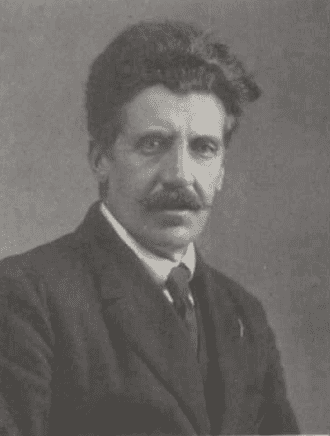Birth of General Sebouh (April 20, 1872)

General Sebouh was one of the remarkable fighters of the Armenian liberation movement at the turn of the twentieth century and considered General Antranig’s right hand.
Arshag Nersesian was born on April 20, 1872, in Tomna, a village north of Baberd (nowadays Bayburt) in Western Armenia. He later took the pseudonym Sebouh. He became involved in Armenian revolutionary activities as a youth. He received his education at the Armenian school in Trebizond and left for Constantinople. He was first a member of the Social Democrat Hunchakian Party and participated in the famous demonstration at Kum Kapu in 1890.
Afterwards, he left for Crimea.
He quit the Hunchakian Party in 1894 and joined the ranks of the Armenian Revolutionary Federation. A year later he went to Kars, where he entered the group of Hrayr Tzhokhk and went to Western Armenia in August 1895. He later joined Antranig’s group and returned to the Caucasus in 1896.
Sebouh tried to cross the Russian-Turkish border in 1899 with the group of Khan (Parsegh Tiriakian), but after a battle with Turkish forces they were forced to return to Kars. In 1900-1903 he participated in the activities of the A.R.F. in Alexandropol (nowadays Gyumri). In 1904 he crossed into Sasun with the group of Torgom and participated in the self-defense of Sasun in 1904. During the fights, Hrayr Dzhokhk came to his help and fell in battle, while Sebouh was wounded. After the end of the self-defense, he went to Van, where he cooperated with Ishkhan (Nikol Poghosian), and later returned to the Caucasus.
In 1907 Sebouh participated in the Fourth General Assembly of the A.R.F. in Vienna (Austria) and later settled in Baberd, but until 1912 he was active in the region of Mush and then Erzerum. In 1913 he lived in Kharkov (nowadays Kharkiv), in Crimea.
During World War I, Sebouh joined the first battalion of Armenian volunteers commanded by Antranig and took part in battles in Khoy, Dilman, and Salmast in 1914-1915. Along with Mourad of Sepastia he founded the “One Armenian, One Gold Coin” initiative, which aimed at rescuing Armenian orphans found among the Kurds and helping Armenian refugees of the Genocide.
Sebouh took part in the decisive battle of Sardarabad in May 1918 and in September 1918 fought with Mourad of Sepastia and Hamazasp (Servantzdiants) in the self-defense of the Armenians of Baku against the combined Turco-Azerbaijani attacks. After the fall of Baku, he went to Yerevan, where he was elected to the Parliament of the Republic of Armenia in 1919. He suppressed the Bolshevik uprising of May 1920 in Alexandropol.
After fighting in the Armeno-Turkish war of September-November 1920, General Sebouh left Armenia via Zangezur following the Sovietization and went to Iran and then the United States.
Sebouh toured the United States as a field worker of the Armenian Revolutionary Federation and helped expand the organization’s presence throughout the country. In 1925 he wrote his memoir, Pages from My Memoirs.
Sebouh settled in Detroit, where he maintained a grocery business, but in 1936 he moved to New York with his family and died there on July 31, 1940, aged 66. His remains were interred in the military cemetery of Yerablur in Yerevan on November 20, 2014.
